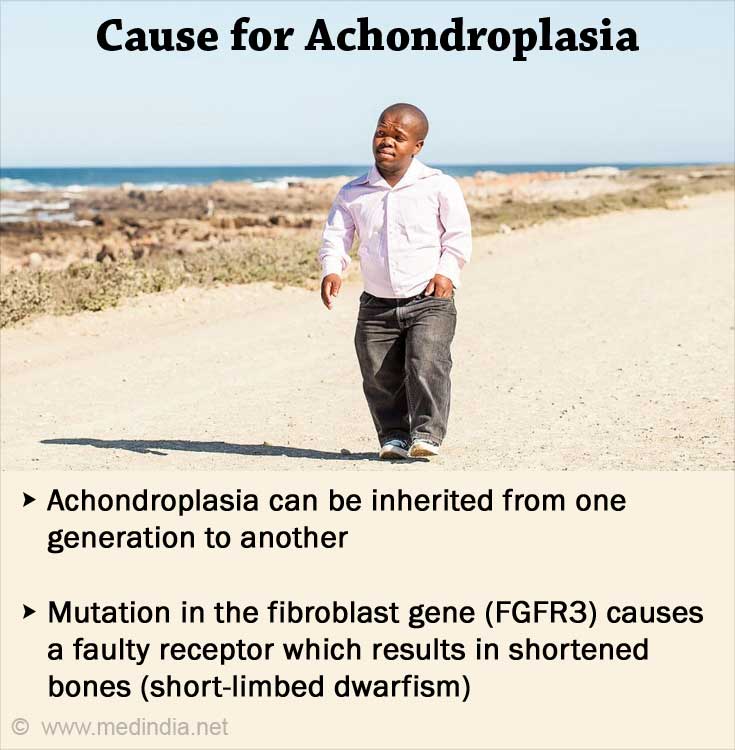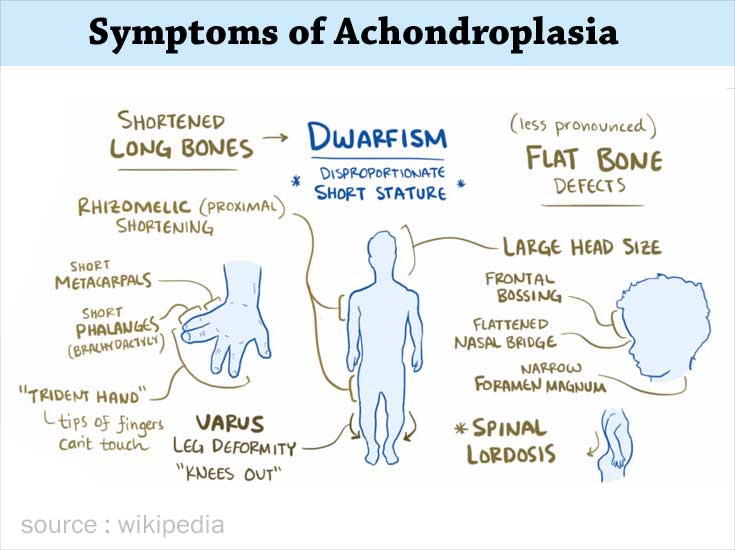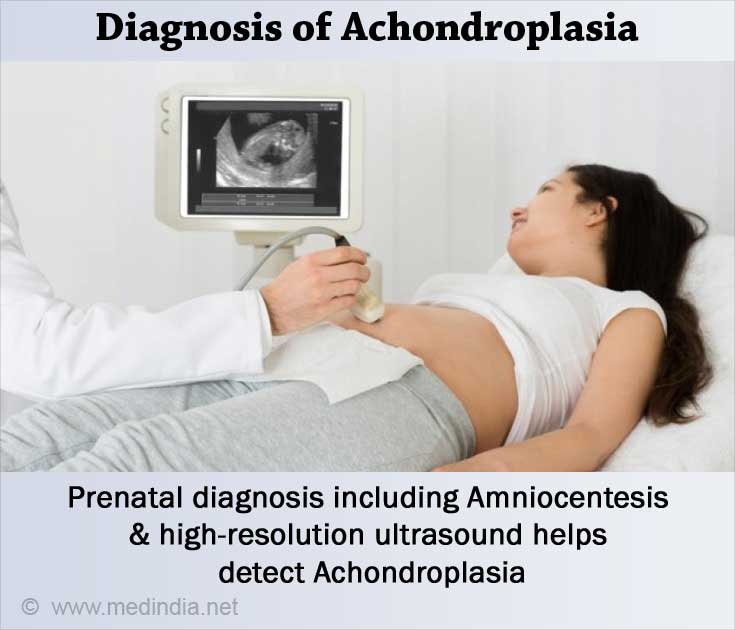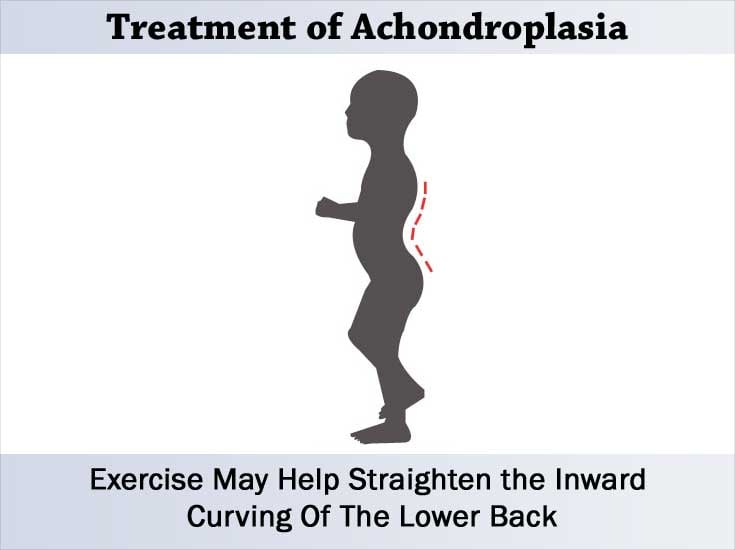What is Achondroplasia?
Achondroplasia is a rare genetic disorder of bone growth that causes short-limbed dwarfism. The short stature is caused because of a problem of conversion of cartilage of the skeleton into bones during early development. This process called ossification is specifically affected in the long bones of the arms and the legs.
The trunk is of average size while the head is often large. This combination results in an abnormally short stature. All persons with achondroplasia are little people.

What are the Causes of Achondroplasia?
Mutations in a single gene called the FGFR3 gene located on chromosome 4 cause achondroplasia.
In 80% of children, the condition is caused due to a spontaneous new mutation in a gene from average-sized parents. The condition may also be inherited from one generation to the next. The inherited gene is considered dominant, since even one mutant copy of it (even when one parent has an altered gene) can cause achondroplasia. The presence of two copies of the gene is considered lethal causing stillbirths or early death.
The FGFR3 gene encodes for a protein called the fibroblast growth factor receptor 3 (FGFR3). The receptor is attached to the surface of cells called fibroblasts that make collagen and other structural materials needed for the tissues and the bones. The receptor regulates bone growth by controlling the process of ossification.
The mutation in the fibroblast gene causes a mutated or a faulty receptor which in turn results in severely shortened bones.
Facts and Statistics on Achondroplasia
- Achondroplasia is one of the oldest known birth defects. An average figure worldwide is approximately 1 in 25,000 births.
- The average height of an adult with achondroplasia is 131 cm (52 inches, or 4 feet 4 inches) in males and 124 cm (49 inches, or 4 feet 1 inch) in females.
- Intelligence is entirely normal in patients with achondroplasia.
What are the Symptoms and Signs of Achondroplasia?
Clinical features of achondroplasia include the following:
- Large head with prominent forehead and less developed midface
- Short arms and legs when compared to the trunk length. This is particularly noticeable in the upper arms and thighs. This results in disproportionate short stature
- A protruding jaw sometimes with poor dental structure. The teeth are crowded and the upper and lower teeth may be poorly aligned
- Fingers appear short and the ring and middle fingers diverge giving the hand a trident (three-pronged) appearance
- "Double" jointedness, caused by lax (loose) ligaments in some joints. Many achondroplastic children can flex their finger, wrist, hip, and knee joints to an extreme degree because of this ligamentous laxity
- Prominence of the mid-to-lower back with a small hump. The hump present at birth goes away with walking and a pronounced sway of the lower back becomes apparent

- Bowed legs
- Decrease in muscle tone (hypotonia)
- Delayed motor milestones in children with achondroplasia
- Narrowing of the spinal canal that can pinch the spinal cord resulting in difficulty in walking due to associated pain, tingling and weakness in the legs
- Fluid accumulation in the brain called hydrocephalus
- Recurrent ear infections
- Obesity
- Temporary stops in breathing called apnea
How Do You Diagnose Achondroplasia?
Achondroplasia is diagnosed with the help of the following tests:
- Preconception - If there is an affected parent or family member, genetic counseling for the parents is advised to explain the chances of the baby suffering from the condition
- Prenatal - If short limbs are detected on routine ultrasound, a high resolution ultrasound is recommended. When there is a family history, a DNA test can also be done to diagnose achondroplasia. The DNA can be obtained by a procedure called chorionic villus sampling (CVS) or amniocentesis.

If achondroplasia has been confirmed before the birth of the baby, genetic counseling for the parents is advised to explain the possible consequences of the condition and a neonatologist has to be consulted.
Postnatal - When short limbs are seen in a newborn, radiologic studies have to be done for skeletal survey and a clinical geneticist has to be consulted. Radiologic details often show a large skull, the bones of the extremities being short with irregular growth plates, and broad hands with short bones and a trident configuration.
How Do You Treat Achondroplasia?
At present, there is no specific treatment to promote growth in children with achondroplasia. Surgery may be used for lengthening of limb bones up to 12-14 inches and correction of bowed legs. Growth hormones can have a modest growth in some children. When special problems complicate achondroplasia, prompt and expert intervention is important.
- The spinal cord compression can require surgery to decompress it
- To relieve pressure on the brain, fluid from the head has to be drained
- Obstructive apnea can be corrected by removing adenoids and tonsils or by surgically opening the airway (tracheostomy) in severe cases
- Frequent middle-ear infections and any hearing loss due to it have to be monitored
- Hunched back will have to be surgically corrected if it is not automatically corrected before the child starts walking
- Inward curving of the lower back can be corrected by special exercises or physical therapy

- Teeth should be straightened and, if necessary, removed to alleviate dental problems
- Obesity should be monitored by standard weight and weight by height grids and not by body mass indexes
Little people have the same intelligence as others. They are no different from the rest. What they need is careful monitoring and support for social adjustment in a world structured for people with normal height.








